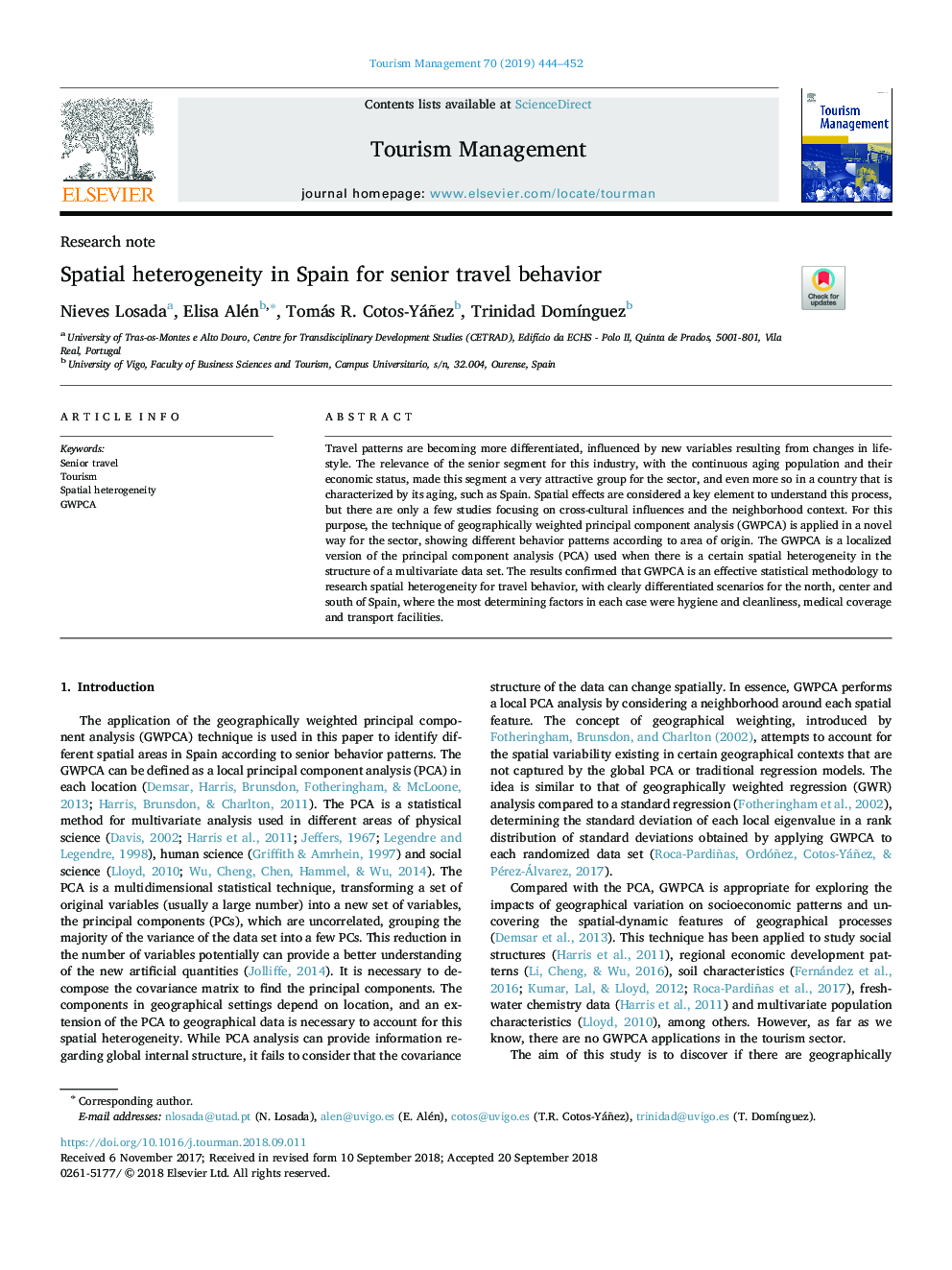| Article ID | Journal | Published Year | Pages | File Type |
|---|---|---|---|---|
| 11005084 | Tourism Management | 2019 | 9 Pages |
Abstract
Travel patterns are becoming more differentiated, influenced by new variables resulting from changes in lifestyle. The relevance of the senior segment for this industry, with the continuous aging population and their economic status, made this segment a very attractive group for the sector, and even more so in a country that is characterized by its aging, such as Spain. Spatial effects are considered a key element to understand this process, but there are only a few studies focusing on cross-cultural influences and the neighborhood context. For this purpose, the technique of geographically weighted principal component analysis (GWPCA) is applied in a novel way for the sector, showing different behavior patterns according to area of origin. The GWPCA is a localized version of the principal component analysis (PCA) used when there is a certain spatial heterogeneity in the structure of a multivariate data set. The results confirmed that GWPCA is an effective statistical methodology to research spatial heterogeneity for travel behavior, with clearly differentiated scenarios for the north, center and south of Spain, where the most determining factors in each case were hygiene and cleanliness, medical coverage and transport facilities.
Keywords
Related Topics
Social Sciences and Humanities
Business, Management and Accounting
Strategy and Management
Authors
Nieves Losada, Elisa Alén, Tomás R. Cotos-Yáñez, Trinidad DomÃnguez,
